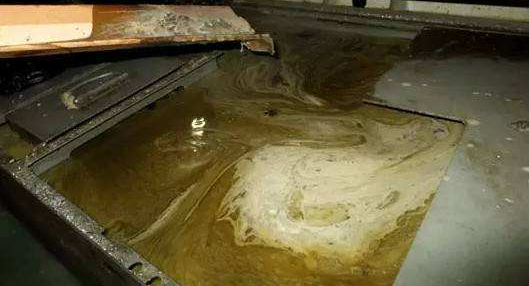
Privacy statement: Your privacy is very important to Us. Our company promises not to disclose your personal information to any external company with out your explicit permission.
In recent years, there have been frequent incidents of companies being notified, punished, and filed for illegally discharging oily wastewater. Therefore, it is necessary and urgent to find effective, fast, and economical methods for treating oily wastewater.

3. Electrolysis method
The electrolysis method includes electrocoagulation and electroflotation. Electrocoagulation is the electrolysis of emulsified oil wastewater using soluble electrodes. Dissolve metal ions from the soluble anode (Fe or Al), and the metal ions undergo hydrolysis to form hydroxides for adsorption, aggregation, emulsification, and dissolution of oil, followed by sedimentation to remove oil.
This method has the advantages of small footprint, good treatment effect, and relatively less scum, and is suitable for the secondary treatment of cooling lubricants in the machining industry after chemical flocculation. The disadvantages are high power consumption, high electrode loss, and high operating costs.
4. Membrane separation method
Membrane filtration method, which uses microporous membranes to trap oil droplets and surfactants, is mainly used to remove emulsified oil and certain dissolved oils, including ultrafiltration, microfiltration, and reverse osmosis methods.
The membrane separation method is most suitable for high concentration emulsified oil wastewater with high discharge requirements and small treatment capacity. However, before using membrane separation, it is necessary to pre-treat the oily wastewater to reduce the pollutant content in the influent, so that the influent water quality can ensure the stable operation of the membrane components within a certain period of time and do not produce membrane pollution.
5. Chemical method
Also known as the chemical method, which involves adding coagulants or demulsifiers to wastewater for demulsification and oil removal, and then achieving oil-water separation through sedimentation or air flotation. Especially for oily wastewater with a large amount of emulsified oil, the next step of treatment is carried out after demulsification and oil removal.
But now, many traditional coagulants and demulsifiers cannot simultaneously reduce wastewater pollutants, or the dosage is too large to be applied in practice.
November 08, 2024
April 26, 2024
April 26, 2024
Teach you how to use the picker ingot cleaning liquid compound to prepare a high quality product In the process of modern agricultural mechanization, the cotton picker is the key equipment for cotton...
The most scientific and practical metal processing waste liquid emission reduction measures! With the rapid development of industrialization, the metal processing industry has not only promoted...
Energy conservation, emission reduction and environmental protection to promote the waste oil industry is still promising Waste oil recycling is of great significance to resource conservation and...
The problem of recycling waste fan gear oil Wind turbine gear oil is a synthetic gear oil, because of its special performance characteristics is widely used in the fan growth gear box, the main role...
Email to this supplier
November 08, 2024
April 26, 2024
April 26, 2024
Send Inquiry

Mr. James
Tel:0086-371-58651986
Fax:
Mobile Phone:+86 13783582233
Email:sales@cn-lubricantadditive.com
Address:No.11 Changchun Road, High-Tech Zone, Zhengzhou, Henan
Related Products List
Mobile Site


Privacy statement: Your privacy is very important to Us. Our company promises not to disclose your personal information to any external company with out your explicit permission.

Fill in more information so that we can get in touch with you faster
Privacy statement: Your privacy is very important to Us. Our company promises not to disclose your personal information to any external company with out your explicit permission.